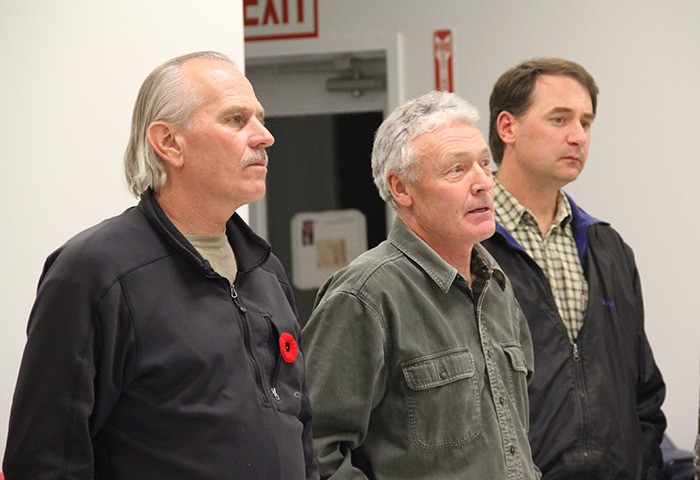The Columbia Valley Recreation Access Coalition (CVRAC) took a hesitant step forward on Monday (November 5) night when it reconvened for the first time since August to revive the process of designing a recreational access management plan for backcountry areas in the Columbia Valley.
New to the process is Cranbrook-based moderator Dan Savage — a renowned conflict management guru and president of Savage Management Ltd. — replacing facilitator Dennis Hamilton who has headed up the process for the last 13 months.
“It’s been a hell of a challenge to move this forward, it’s pushed my skills,” Hamilton told the meeting, after introducing Savage to the group.
Whereby facilitation is the process of bringing willing people together, mediation is called for “when things run amok,” he explained.
Government-sanctioned recreation access management
plans are in place in Golden, Cranbrook and Fernie. Golden was the pilot as it had a rating of “low” in terms of potential for conflict while Fernie was rated “moderate.” Cranbrook — despite its “high” rating — was chosen over the Columbia Valley because it was deemed to have less potential for conflict with more common ground among user groups. The potential for conflict around a backcountry management plan in the Columbia Valley was rated as “very high,” said Hamilton, which is why the region has so far been overlooked. A management strategy for the Columbia Valley will have to take into consideration 1.35 million hectares of land — the equivalent of 12,479 kilometres of road from Vancouver to Halifax — whereby Golden’ s plan was for 900,000 ha, Cranbrook was 850,000 and Fernie encompassed half a million.
“I don’t think anybody needs to feel guilty (about the conflict),” said Hamilton, noting it had escalated to the point where two MLAs, one potential MLA, and a minister were involved.
The Ministry of Forests, Lands and Natural Resources announcing in August that it was withdrawing its staff from the CVRAC talks, citing the absence of key stakeholders as the main reason, is when “things really fell apart,” he said. But, according to Hamilton, the government hasn’t abandoned the process and has kept in communication.
“I think you need to think election around the corner on this,” he said.
Two formal resignations from the talks have been received to date — the Quad Riders ATV Association of British Columbia until the government reengages, and Cheryl Willard with Kootenay Snowsports Society.
Also distinctly absent from the 20 or so people around the table was any representation from the motorized sector.
“I feel like I’m at Wildsight meeting,” lamented Scott Pitt from the Invermere Rod and Gun Club.
There was unanimous agreement that if the local dirt bike and snowmobile clubs didn’t come back to the table, then the coalition was spinning its wheels and the process couldn’t move forward.
Savage suggested making the process more attractive and less theoretical so these groups would return.
“What I hear here is we need to do some doing,” he said.
Nipika Mountain Resort president and general manager Lyle Wilson expressed the frustration many were feeling around the lack of actual land use planning to date.
‘We’ve not spoken one minute about land use,” Wilson said.
Debate over whether the next meeting should focus on finalizing the sectors or tackling a landscape unit as a case study ended with an agreement to do both.
“This will test drive the sectors,” said Wildsight members Juri Peepre.
Columbia Basin Trust is examining the process to determine future funding. Hamilton’s ongoing participation is undetermined while Savage will be leading the next meeting scheduled for November 19 at the Invermere Fire Hall with a start time of 7 p.m. About 80 stakeholders are being emailed a map of a low-conflict landscape unit beforehand.
“I’m thrilled to see everyone here,” said CBT community liaison Katherine Hamilton. “It shows me that there’s traction for this process.”
